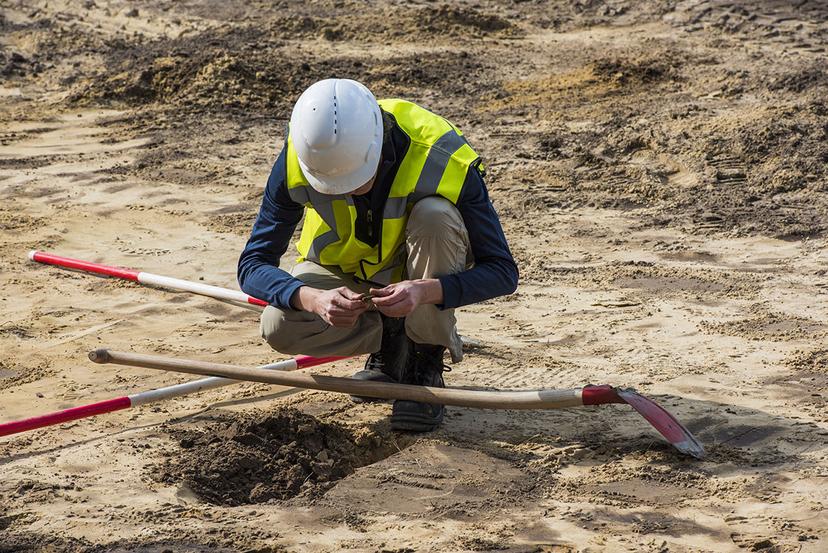Earth Sciences

Industry Outlook
The employment outlook for those in earth science positions is generally expected to be good through 2028. The U.S. Department of Labor predicts faster than average job growth for several earth science occupations during this period, due to a large number of expected retirements and the relatively low number of qualified earth science graduates entering the field. The American Geosciences Institute's (AGI) 2019 report, Status of the Workforce, has a similar outlook for the industry. The AGI expects a shortage of 118,000 full-time jobs in the coming decade, but notes that technology and innovation are helping to fill this gap somewhat. One concern is that employers are finding that new graduates lack several important skills in areas such as leadership, writing, collaboration, project management, analytics, adaptability, and programming.
Opportunities also vary by specialty. Most geologists and geophysicists are employed in the oil and gas industry. This industry can be somewhat volatile, but when oil prices are high, as they were the past few years, employers tend to invest more heavily in the research that geologists and geophysicists do. The ever-increasing demand for energy resources and the development of new technologies has brought some stability to this field in recent years. For example, the technique of hydraulic fracturing, breaking through rock formations in the ground and releasing the natural gas and oil there, has increased the world's ability to produce an ample supply of these fossil fuels for the next several decades. Initially, fracturing created a boom in the industry in specific areas of the country in which it was successful. Most of the large shale plays are in the Appalachian states, Texas, Louisiana, and in some plain states.
The prospects for employment should be favorable in the areas of environmental protection and reclamation. The DOL predicts an 8 percent growth rate in the number of environmental scientist and specialist positions through 2028, which is faster than the average. Earth scientists will be needed to help clean up contaminated sites in the United States and help private companies and government agencies comply with environmental regulations.
Positions with agencies dependent on government funding, however, will be closely tied to the status of federal and state budgets. In times of cutbacks, there will be little if any job growth with such agencies.
Most oceanographers' work is research-based and there will be stiff competition for funding, especially funding from government agencies. Opportunities are better for those with advanced education and for those who have expertise in other sciences or engineering.
Overall employment of geographers is expected to increase by 3 percent through 2028, a rate that is slower than the average, according to the DOL. Geographers will be needed to provide input in the planning phases of all types of construction and development projects, but competition for work will be keen. Geographers who have graduate degrees, experience with geographic technology, and specialized expertise will have the brightest employment outlook. With more companies becoming global enterprises, the demand for geographers to assist with choosing business sites is also creating opportunities for these scientists. Geographers are especially needed for assessing human impacts on the environment.
Employment for meteorologists is expected to grow by 8 percent, or faster than the average, according to the DOL. Most new jobs should be available in private industry, where weather-monitoring firms can provide constituents with more detailed local and seasonal forecasting than the general forecasts provided by the National Weather Service. New technologies have improved the accuracy of forecasts, and industries that depend on these forecasts, such as the airline and alternative energy industries, are turning more to meteorologists to develop specialized weather forecasts for planning purposes. The National Weather Service has no plans to increase the number of weather stations or the number of meteorologists in existing stations for many years, and employment of meteorologists in other federal agencies is expected to remain stable.
During the coronavirus pandemic that began in 2020, the global financial downturn led to cuts in research budgets for earth scientists and slowdowns for ongoing projects. In some cases, travel restrictions prevented earth scientists from conducting field research. In the academic world, shifts to remote learning for college and other higher education affected hiring, leading to fewer job opportunities. At the same time, the pandemic created new research opportunities for environmental scientists because lockdowns, quarantining, and diminished travel decreased carbon emissions and air pollution.
The weather forecasting industry, as of November 2020, was a $1.5 billion market and is projected to reach $2.3 billion by 2025, according to ReportLinker. This more than 9 percent annual growth rate is attributed to factors such as growth in climate change patterns, increased safety concerns, and growth in renewable energy production.
The American Geosciences Institute reported that from February through June 2020, the employment of geoscience graduates varied widely based on their degree level as well as when they had earned their degree. Approximately 96 percent of the graduates who had earned their degree between 2014 and 2018 had jobs, while "only 59 percent of graduates who earned their degree between 2019 and 2020 reported the same." Most graduates who held a bachelor's or master's degree were employed as non-academic geoscientists. They were employed as geoscientists, geoscience managers, geoscience technicians, or geoscience engineers. Others worked in computer software and support, industrial engineering, educational and library operations, policy analyst positions, administrative support, and agriculture.
